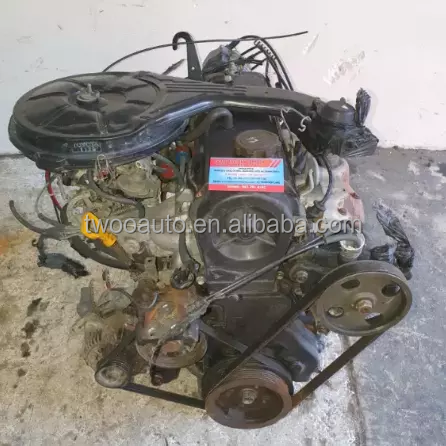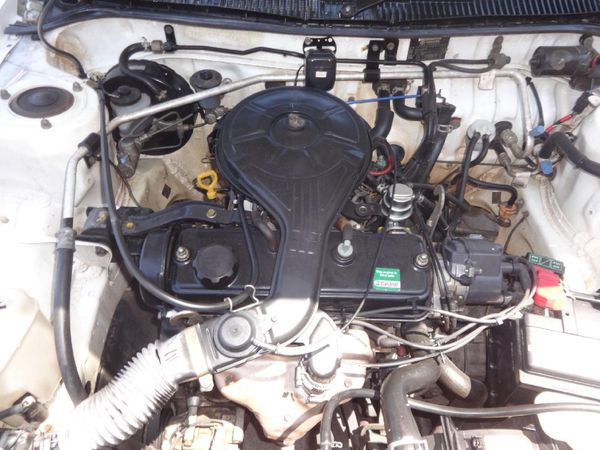Toyota Tazz: A Reliable and Affordable Compact Car for Everyday Use
Toyota Tazz: A Reliable and Affordable Compact Car for Everyday Use
Blog Article
Discover the most recent Patterns in Engine Modern Technology Via Tazz
In the swiftly evolving landscape of auto modern technology, Tazz stands at the forefront, highlighting substantial improvements in engine systems that prioritize both advancement and sustainability. tazz. From crossbreed engines that optimize gas efficiency to the introduction of hydrogen fuel cells, the fads shaping contemporary powertrains are not only boosting performance yet additionally attending to vital ecological challenges. As the sector remains to press boundaries, it is vital to think about exactly how these growths will affect future transport options and the wider implications for international power intake. What lies ahead in this critical improvement?
Hybrid Engine Innovations
Crossbreed engine developments represent a crucial shift in auto technology, integrating the advantages of interior burning engines with electrical propulsion systems. This assimilation not just boosts gas performance but likewise reduces emissions, meeting increasingly strict ecological policies. By making use of both energy resources, hybrid engines can optimize efficiency, providing power when needed while conserving gas throughout much less requiring motoring problems.
Recent improvements in hybrid innovation consist of enhancements in battery performance and regenerative stopping systems. These advancements permit for better power healing throughout deceleration, which can be redirected to aid in acceleration or power auxiliary systems. In addition, makers are concentrating on portable designs and lightweight products to make best use of the performance of crossbreed powertrains.
The development of plug-in hybrids has actually additionally expanded the market, making it possible for motorists to bill their cars making use of common electric outlets. This function commonly permits for substantial all-electric variety, further lowering dependence on conventional fuels. tazz. As the automobile industry proceeds to develop, hybrid engine modern technologies are anticipated to play a crucial function in bridging the void in between standard cars and fully electric models, supplying a transitional service that satisfies varied consumer demands and preferences
Breakthroughs in Electric Powertrains
The automotive landscape is swiftly evolving, with electric powertrains arising as a leading pressure in lasting transportation. Developments in electric car (EV) modern technology are dramatically boosting performance, customer, and performance experience. Key innovations consist of enhancements in battery chemistry, which have actually raised energy thickness, lowered billing times, and extended overall battery life.
Solid-state batteries, as an example, guarantee to revolutionize the marketplace by giving greater safety and performance contrasted to traditional lithium-ion cells. Moreover, improvements in regenerative braking systems are allowing vehicles to recuperate energy throughout deceleration, adding to total efficiency.
Along with battery modern technology, electric motor layouts are becoming much more innovative. Innovations such as incorporated motors and advanced thermal monitoring systems are aiding to enhance power distribution and minimize weight, inevitably improving car dynamics.

Collectively, these breakthroughs emphasize the commitment to shift in the direction of cleaner, much more effective transportation options, placing electric powertrains at the leading edge of automotive technology.
The Increase of Hydrogen Fuel Cells
Significantly, hydrogen gas cells are acquiring traction as a feasible alternative to typical inner burning engines and battery electric automobiles. This modern technology takes advantage of the chemical power stored in hydrogen, converting it right into electrical power with an electrochemical reaction with oxygen. The primary byproduct of this process is water, making hydrogen gas cells an eco-friendly alternative with absolutely no discharges at the tailpipe.

Car manufacturers are progressively buying hydrogen gas cell my explanation modern technology, identifying its capacity for long-range applications and fast refueling capacities that measure up to conventional gas. Additionally, markets such as durable transportation and public transportation are particularly fit for hydrogen fuel cells, where battery electric options may fall short because of weight and range constraints.
As study and investment proceed to increase, hydrogen fuel cells are positioned to play Read Full Article a considerable function in the future landscape of tidy transportation and energy options.
Enhancements in Internal Burning Engines
Technologies in interior combustion engine (ICE) modern technology are transforming conventional cars to satisfy modern-day environmental standards and performance assumptions. Among one of the most considerable improvements involves the combination of sophisticated gas shot systems. These systems maximize the air-fuel mix, enhancing burning performance and resulting in lowered exhausts. Direct gas injection, as an example, permits much better atomization of gas, bring about more full combustion and improved power outcome.
Furthermore, turbocharging has acquired importance, allowing smaller engines to supply higher efficiency without the weight of larger engines - tazz. This innovation not just enhances performance but also adds to decrease gas consumption. Variable valve timing systems are additionally being refined, allowing engines to adjust to numerous driving conditions for improved torque and responsiveness
In addition, using light-weight products in engine building is becoming common, additional improving fuel efficiency by reducing total lorry weight. Engine control units (ECUs) are progressively advanced, making it possible for real-time changes that optimize performance and discharges.
These enhancements jointly signify a crucial change in ICE innovation, lining up with global sustainability goals while still giving the performance vehicle drivers anticipate from their automobiles. As the industry link progresses, these enhancements continue to shape the future of standard automotive design.
Future Patterns in Engine Performance
Significant developments in engine effectiveness are anticipated as producers concentrate on integrating advanced technologies to satisfy rigid ecological policies and customer needs. The shift in the direction of electrification, hybrid systems, and alternative gas is reshaping the auto landscape, driving advancements that enhance gas economic climate and decrease discharges.
Among the essential trends is the execution of advanced materials and manufacturing strategies. High-strength alloys and lightweight composites add to minimized lorry weight, thus boosting overall effectiveness. In addition, the fostering of turbocharging and variable shutoff timing technologies enables boosted power result from smaller engines, additionally enhancing fuel economic climate.

Final Thought
Technologies in crossbreed engine systems, electric powertrains, and hydrogen fuel cells show a commitment to lowering discharges while improving performance. Renovations in interior combustion engines and a focus on lightweight materials contribute to general engine effectiveness.
From crossbreed engines that maximize gas effectiveness to the appearance of hydrogen fuel cells, the fads forming contemporary powertrains are not only enhancing performance however additionally resolving important ecological challenges.Crossbreed engine technologies stand for an essential shift in vehicle technology, integrating the benefits of inner combustion engines with electric propulsion systems.Additionally, turbocharging has gained importance, enabling smaller engines to provide higher performance without the weight of bigger engines. In addition, the adoption of turbocharging and variable valve timing technologies enables for boosted power outcome from smaller engines, additionally improving fuel economic situation.
Renovations in inner combustion engines and a focus on lightweight products add to total engine performance.
Report this page